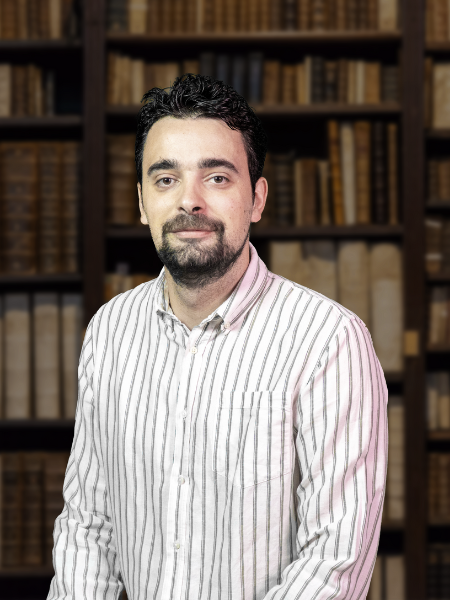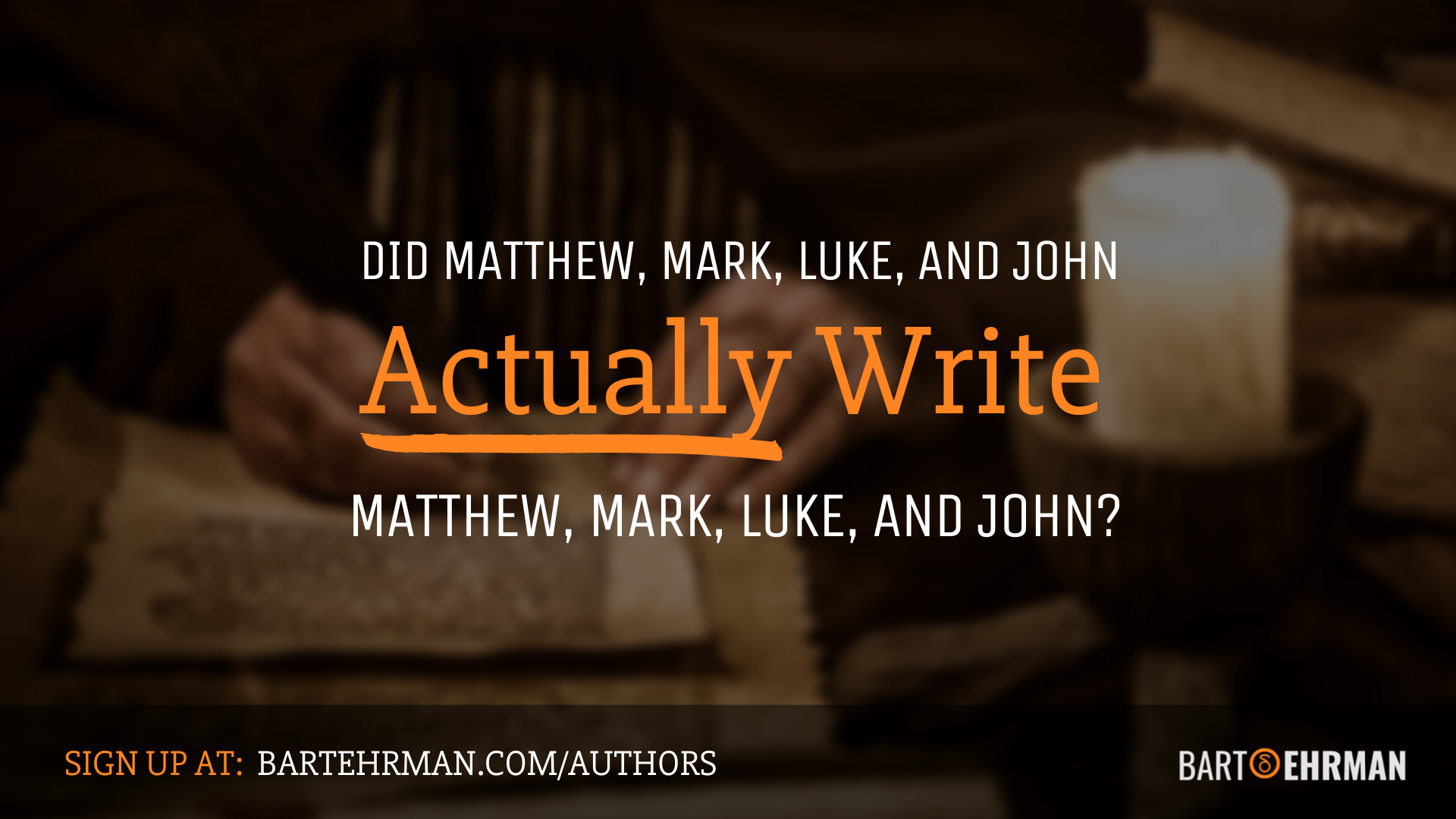How to Study the Bible (The Answer May Surprise You!)

Written by Marko Marina, Ph.D.
Author | Historian
Author | Historian | BE Contributor
Verified! See our guidelines
Verified! See our editorial guidelines
Date written: August 18th, 2024
Edited by Laura Robinson, Ph.D.
Disclaimer: The views and opinions expressed in this article belong to the author and do not necessarily match my own. - Dr. Bart D. Ehrman
I remember listening to Bart D. Ehrman explain how his students usually start their New Testament journey with the Gospel of Matthew, then proceed to Mark, and so on. Initially, they notice that the narratives are similar, with only subtle differences.
This experience is akin to reading any novel, where the primary goal is to follow the storyline. However, this approach merely scratches the surface.
This isn’t how to study the Bible from a scholarly perspective. Instead, it remains a reading exercise, lacking the critical (comparative) analysis required for historical understanding of the Bible.
The Bible is a publishing phenomenon, making it the “book among books.” Since 1815, it has been printed an estimated 5 billion times in some 2,100 languages. Such widespread distribution underscores its unparalleled influence and the necessity of studying it rigorously.
This article will not focus on devotional reading but rather on a scholarly approach to studying the Bible, inviting readers to explore methods that reveal its historical, textual, and editorial intricacies. These scholarly perspectives open new horizons, transforming our understanding of this ancient text.
For those interested in diving deeper into the authorship of the New Testament Gospels, I highly recommend an excellent free webinar by Bart D. Ehrman titled “Did Matthew, Mark, Luke, and John Actually Write Matthew, Mark, Luke, and John?”
In it, Dr. Ehrman provides clear evidence that reveals a surprising truth about the real authors of the New Testament Gospels. This webinar is a perfect complement to the scholarly methods discussed in this article.

The Birth of Modern Biblical Scholarship
In the early centuries of Christianity, discussions around the Bible, especially the New Testament, focused on the development, confirmation, and articulation of major doctrines and beliefs. These discussions predominantly centered on the Trinity, Christology, and the fulfillment of Old Testament prophecies concerning Jesus.
Philosophical and theological arguments dominated these debates, yet they seldom questioned the Bible's divine inspiration and supreme authority.
Once Christian orthodoxy was largely established during late antiquity, Bible study shifted towards practical and pastoral matters. It was all about reforming the Church to emulate the perceived simplicity of the first generation of Christians.
In his book, An Introduction to the Bible, John W. Rogerson highlights a crucial period in the emergence of scholarly Bible study. He notes:
“It was not until the seventeenth century that an orthodoxy that had prevailed for more than a millennium began to be disturbed. The first disturbers, and then only indirectly, were the Deists, for whom religion was not something supernaturally revealed, but something accessible to human reason, with special reference to morality.”
This change effectively marked the beginning of the Enlightenment, a time in which new approaches to reading the Bible emerged. In other words, intellectuals seriously considered the question of how to study the Bible and came to different (scholarly) conclusions.
So, the Enlightenment (17th-18th centuries) catalyzed a new way of engaging with the Bible, prompting a re-evaluation of traditional Bible study methods. Several key factors contributed to this shift.
Firstly, world exploration highlighted the geographical and cultural limits of the biblical world. Secondly, the devastating Wars of Religion (1618-1648) in Europe fueled a moral revulsion against dogmatism.
In the wake of these wars, English philosopher John Locke penned “A Letter Concerning Toleration”, in which he argued: “No peace and security among mankind — let alone common friendship — can ever exist as long as people think that governments get their authority from God and that religion is to be propagated by force of arms.”
The essential assumptions of the Enlightenment further challenged the “Ancien Régime” or traditional system. The belief that human reason is the ultimate measure of truth questioned the authority of divine revelation and paved the way for critical Bible study methods.
Additionally, the rise of historical consciousness led to the Bible being studied accordingly, with its value measured against history’s events. Consequently, it began to be scrutinized like any other ancient text, laying the groundwork for modern biblical scholarship.
This period of Enlightenment set the stage for the development of various branches within biblical scholarship, each becoming a distinct field of study.
As we proceed, we’ll explore some of the most significant Bible study methods that scholars use today. But they aren’t strictly restricted within the academic world! Thanks to the various study bibles, lay audiences today can also profit from scholarly insights and discoveries.
How to Study the Bible With the Historical-Critical Method
This is the method I usually start with in my work with students. It’s the first choice to answer the “How to Study the Bible for Beginners?” question. Perhaps that's because, as a historian, I can't resist diving into the past! So, what is it? How can we define this method?
The historical-critical method is an approach that merges Enlightenment principles, Protestant theological perspectives, and scientific methodologies. It emphasizes reason and focuses on understanding the text within its historical context, rather than interpreting it through a dogmatic lens.
This method also incorporates Protestant and Humanist (e.g. Erasmus) emphases on returning to the Bible's original languages and using scientific methods to assess ancient sources for their historical value.
A practical application of the historical-critical method can be seen in the study of the New Testament Gospels. Instead of reading the Gospels sequentially (horizontal reading), people analyze the same stories as they appear in different Gospels (vertical reading).
This approach has effectively unveiled tensions and contradictions among the Gospel accounts that earlier periods didn’t address seriously. One notable example is the resurrection accounts that contain several important discrepancies — a point we discussed in an earlier article!
After examining these discrepancies, scholars began to challenge some long-standing assumptions about the Bible — both the Old and the New Testament!
For example, by the end of the 18th century, a body of critical knowledge had begun to emerge about the Old Testament. John W. Rogerson notes that parts of Genesis were divided into two sources, casting serious doubt on the traditional attribution of Moses as the author.
Furthermore, propositions began to emerge that an unknown prophet living 200 years after Isaiah wrote chapters 40-66 of the Book of Isaiah. These insights fundamentally questioned the traditional views of biblical authorship and composition.
In the New Testament, the historical-critical method spurred the first quest for the historical Jesus. One of the pioneers of this movement was German theologian Herman S. Reimarus. As Raymond E. Brown mentions in An Introduction to the New Testament, Reimarus was “the first to develop a picture of Jesus distinct from the Christ described in the Gospels.”
Reimarus argued that Jesus was a political figure who aimed to become king but ultimately failed and was crucified by the Romans. According to Reimarus, in their efforts to gain power and esteem, Jesus' disciples stole his body from the tomb, fabricated the story of the resurrection, and transformed Jesus into a universal savior.
While contemporary scholars may not agree with Reimarus' conclusions, his methodological approach — following the fundamental principles of the historical-critical method — remains a cornerstone of biblical scholarship.
This method has profoundly influenced how to study the Bible thus providing tools to critically analyze its texts and uncover deeper historical and contextual insights.
Tip For Readers: How to Study Bible Using Historical-Critical Method
If you want to explore the Bible from a historical perspective, one way of doing that would be to utilize online tools such as the Gospel Parallels. This is an excellent online aid that can help you compare the same stories in different Gospels side by side, revealing differences and similarities that can provide deeper insights into the texts.
For instance, by examining the accounts of Jesus’ resurrection in Matthew, Mark, Luke, and John, you can observe significant variations and explore the possible reasons behind these differences.
Additionally, consider using a study Bible that includes historical and cultural context notes such as the NIV Cultural Backgrounds Study Bible to gain further understanding of the historical settings of these exceptional sources.

Textual Criticism: Analyzing Bible Manuscripts
Another critical area of research that began during the Enlightenment is called “textual criticism.” This field involves comparing various manuscripts of biblical texts to determine the most accurate wording. In a broader context, it's important to note that we don’t possess any of the original books of the Bible.
All we have are later copies — manuscripts and papyri — that often differ from one another. These differences, or variants, are usually minor, such as small spelling errors. However, sometimes they are significantly important, impacting crucial Christian doctrines like the Trinity and the Divinity of Jesus.
To learn more about it, I highly recommend Bart D. Ehrman’s excellent online course "The Scribal Corruption of Scripture: How the Bible Was Changed and Why Readers May Never Know".
Textual criticism seeks to address these issues. As Bart Ehrman explains in his bestseller Misquoting Jesus:
"One of the leading questions that textual critics must deal with is how to get back to the original text — the text as the author first wrote it — given the circumstance that our manuscripts are so full of mistakes. The problem is exacerbated by the fact that once a mistake was made, it could become firmly embedded in the textual tradition, more firmly embedded, in fact, than the original.”
The beginnings of textual criticism can be traced back to several pioneering scholars. French priest Richard Simon (1638-1712), in his Critical History of the Text of the New Testament, analyzed the authenticity, accuracy, authority, and reliability of all the then-known New Testament sources.
The Catholic Church, in a move reminiscent of their handling of controversial figures (e.g. Giordano Bruno), ensured Simon's book received a thorough review and, unsurprisingly, banned it. Apparently, the Church preferred to keep things less “critical” and more “traditional.”
Other significant contributors include Johann A. Bengel (1687-1752) and Johann J. Wettstein (1693-1754). Wettstein's two-volume edition of the New Testament, published in 1751-1752, provided a comprehensive set of variants, organized into categories.
Did You Know?
From Prohibited to Promoted: The Evolution of Catholic Biblical Criticism
The early relationship between the Catholic Church and Biblical criticism was anything but harmonious. Pioneering scholars who applied scholarly methods to the Bible often faced severe repercussions, including persecution and ex-communication. Their works were frequently placed on the infamous “Index Librorum Prohibitorum”. It seems the Church initially wasn’t too keen on scholars stirring the theological pot!
However, the clouds of opposition eventually parted. Catholic biblical criticism received a significant boost with the 1943 Papal Encyclical “Divino afflante Spiritu,” which encouraged the scholarly study of the scriptures. This momentum continued with the Second Vatican Council (1962–1965), which further endorsed critical methods. Fortunately today, there is no major distinction between the scholarly approaches used by Protestant and Catholic scholars.
The scientific method in textual criticism truly began with Johann J. Griesbach (1745–1812) and Karl Lachmann (1793–1851), who attempted to establish the Greek text of the New Testament as it was in the 4th century, breaking away from the Textus Receptus that went back to Erasmus in the 16th century.
Textual critics use several basic criteria to determine which variant is closest to the original. These include:
Older manuscripts are generally considered more reliable, and readings found in geographically widespread texts are given more weight. Additionally, the context and style of the passage are analyzed to decide which variant makes the most sense within its original setting.
Bart D. Ehrman and Bruce M. Metzger eloquently describe the nuanced nature of this discipline in their book The Text of the New Testament. After presenting the basic criteria, they note:
“To teach another how to become a textual critic is like teaching another how to become a poet. The fundamental principles and criteria can be set forth and certain processes described, but the appropriate application of these in individual cases rests upon the student's own sagacity and insight.”
This observation underscores the complexity and intellectual rigor involved in textual criticism, making it one of the key Bible study methods for scholars seeking to understand how to study the Bible.
Tip for Readers: Exploring Textual Variations in the Bible
To study textual variations in the Bible, you might consider resources such as the Textual Commentary on the Greek New Testament by Bruce Metzger or online databases like the New Testament Manuscripts (CSNTM).
For more hands-on exploration, the CSNTM offers access to high-resolution images of the New Testament manuscripts. However, using these resources effectively requires a background in ancient languages such as Greek and Coptic. The manuscripts are in their original languages, and interpreting them without this knowledge can be challenging.
Finally, if you’re interested in understanding textual variations but lack expertise in ancient languages, a more accessible starting point would be Bart D. Ehrman and Bruce M. Metzger’s book The Text of the New Testament: Its Transmission, Corruption, and Restoration.
Their book covers key topics, including basic methodology and specific variations thus providing insights into how scholars work to reconstruct the “original” texts of the New Testament.
Redaction Criticism: Analyzing Editorial Choices
To truly grasp what redaction criticism entails, we must shift from theory to practical examples. As a historian of early Christianity, I’ll take the New Testament Gospels as an example.
We know that the authors of the New Testament Gospels used various sources in their composition. One prevailing theory is the “4-Source Hypothesis”, which posits that both Matthew and Luke used Mark as one of their primary sources, along with a hypothetical source known as "Q."
Redaction criticism examines how authors create literary works by modifying or editing their sources. As Bart D. Ehrman explains in The New Testament: A Historical Introduction:
“Redaction criticism is the study of how authors have created a literary work by modifying or editing their sources of information. The underlying theory behind the method is simple. An author will modify a source of information only for a reason — why change what a source has to say if it is acceptable the way it is? If enough changes point in the same direction, we may be able to uncover the redactor’s principal concerns and emphases.”
This method helps us understand the motivations and theological perspectives of (in this case) the Gospel writers by analyzing the changes they made to their sources.
Pioneering figures in redaction criticism, such as Günther Bornkamm, Willi Marxsen, and Hans Conzelmann, laid the groundwork for this approach during the mid-20th century. Their work highlighted the importance of understanding the editorial choices made by biblical authors.
A concrete example of redaction criticism can be seen in the story of Jesus healing the leper in Mark 1:40-45. In this account, there is a textual issue regarding whether Jesus was “feeling compassion” or “indignant”.
Most textual critics, as Bart D. Ehrman notes in “Misquoting Jesus” argue that the original version of Mark contained the word "indignant" (Greek: "ὀργισθείς"): “Jesus was indignant. He reached out his hand and touched the man…” (Mk 1:41; NIV translation).
However, both Matthew and Luke, who took this story from Mark, chose to omit the term “indignant”. Instead, their versions simply state, "Jesus reached out his hand and touched the man…”
This editorial decision suggests that Matthew and Luke were uncomfortable with the idea of Jesus being angry at the man he healed. By omitting “indignant”, they portrayed Jesus in a more compassionate light thus aligning with their theological emphasis.
This small but interesting example illustrates how redaction criticism can reveal the underlying concerns and theological agendas of the Gospel writers, providing a deeper understanding of how to study the Bible and its complex textual history.
How to Study the Bible With the Inductive Method
While the previously discussed scholarly Bible study methods are employed by both Christians and non-Christians, the inductive Bible study method is typically reserved for religious communities.
People using an inductive study bible emphasize personal engagement with the text and seek to apply its teachings to their lives.
Inductive Bible study involves three primary steps: observation, interpretation, and application. During observation, the reader carefully examines the text, noting key details, repeated themes, and literary structures.
In the interpretation phase, the reader seeks to understand the meaning of the text within its historical and cultural context, often using cross-references and additional biblical resources. Finally, the application step involves reflecting on how the text's message can be applied to one’s personal life and spiritual journey.
This method fosters a deep, personal connection with the Bible, encouraging readers to discover its relevance to their own lives. Inductive Bible study is a popular approach within many Christian communities, providing a structured yet intimate way to engage with Scripture.
The third step, in particular, aligns more closely with theology than history, as it seeks to find trans-temporal meanings in biblical stories that can offer satisfactory answers to contemporary problems and challenges.
Conclusion
In this article, I have outlined and explained several scholarly Bible study methods. However, it’s important to note that these scholarly approaches aren’t inherently superior to religious methods of Bible study; they are simply different.
Each method offers its unique insights and tools, contributing to a more comprehensive understanding of the biblical texts.
When I engage in my scholarly work, I naturally emphasize these and other academic methods to analyze and interpret the Bible. These approaches allow for a critical and historical examination of the text thus revealing its complex origins and development over time.
On the other hand, my mind drifts back to my high school religious classes where I approached the Bible from a devotional perspective, focusing on its spiritual and theological significance. Both approaches have their place and value, depending on the context and objectives of the study.
Ultimately, how to study the Bible depends on one's goals and perspectives. Whether through scholarly methods that dissect the text's historical and literary layers or through religious methods that seek spiritual and moral guidance — each approach enriches our engagement with this profound and influential collection of writings.
FREE COURSE!
WHY I AM NOT A CHRISTIAN
Raw, honest, and enlightening. Bart's story of why he deconverted from the Christian faith.
Over 6,000 enrolled!

